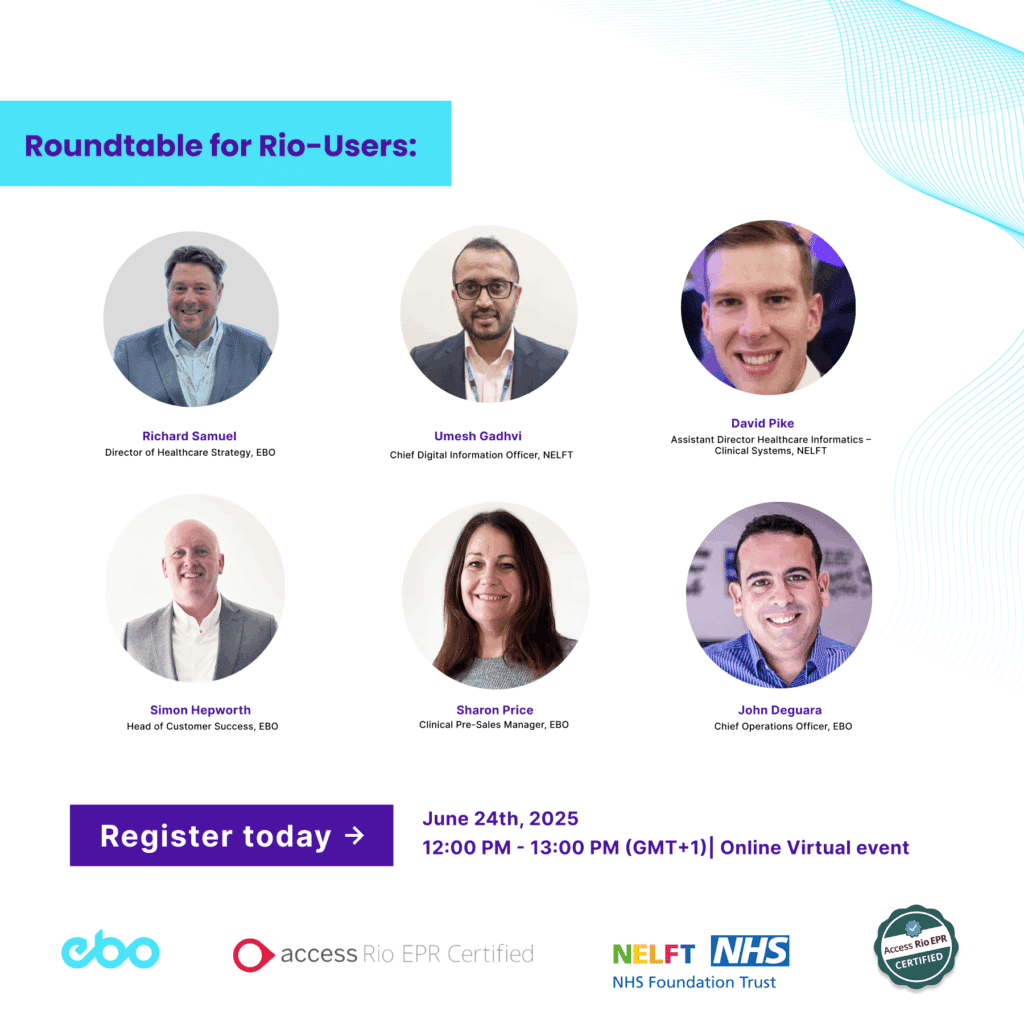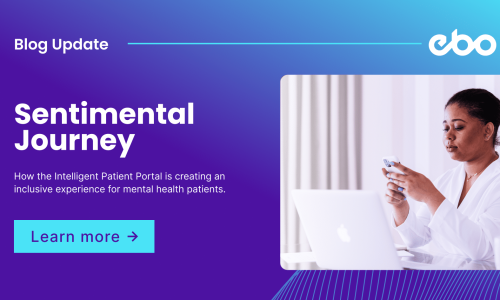
In ep. 2 of the Digital Dose podcast, released in recognition of Mental Health Awareness Month in May, former NHSE Director and Chief Executive Richard Samuel—who led the original rollout of NHS patient portals—joins Trudy Kerr to explore:
- Why digital exclusion is still a major issue in mental health?
- What empathy looks like in AI-powered systems?
- How Patient Portal 4.0 redefines trust, access and support?
- And why the conversation on patient care must continue beyond May?
May may be over, but real care doesn’t end on a calendar.
Why Patient Portals Must Evolve
Originally, NHS patient portals were designed to support elective recovery, offering patients basic tools to manage appointments, view results, and receive messages.
It was a digital bridge between patient and provider—but a transactional one.
“That’s not to diminish its value,” he adds, “but we have to acknowledge the limitations. The nature of the interaction was basic. Click here to change your appointment. View your test results. It worked—but it wasn’t transformational.”
Now, with the push toward broader digital adoption, he argues, the moment has come to take stock. “We need to ask: what next, why next, and—most importantly—for whom are we building these systems?”
Mental Health Patients Are Being Left Behind
As patient portals expand, it becomes clear they haven’t been designed with every patient in mind. People consistently emphasise the importance of being treated with empathy and respect.
Yet only 68% of patients with mental health conditions feel as though they are always treated with respect and dignity, compared to 83% of patients without such conditions.
That gap speaks volumes.
According to Richard, this is due to a combination of challenges: “It’s about access to hardware, digital literacy, trust, and system design that doesn’t fully meet their needs—or their motivations.”
He stresses the importance of understanding nuance: “We shouldn’t stereotype—there are highly digitally literate mental health patients, just as there are physically unwell patients who struggle online. But we do know from the data that mental health service users face unique barriers.”
What Does Empathy Look Like in Digital Form?
That idea—digital empathy—sits at the heart of EBO’s mission.
“Years ago, all a chatbot could do was offer a few canned replies. But now, with AI and natural language processing, we can do so much more,” Richard explains. “We can track sentiment, recognise frustration, adapt the tone of conversation, even route someone to a human being if it’s clear they’re in distress.”
This isn’t just about replicating a human conversation. It’s about anticipating need, de-escalating emotion, and creating a space that feels safe—even when it’s digital.
He continues: “AI is no longer just about speed or scale. It’s about sensitivity. That’s especially critical in mental health, where trust and confidence are often lower to begin with.”
Roundtable:
AI-powered Patient Portals for Mental Health & Community
As a long-standing partner of The Access Group, EBO has already helped 12 NHS Trusts across the UK deploy our Virtual Assistant solution — tailored specifically for Rio customers. Join NELFT, EBO, and NHS leaders for an exclusive roundtable on AI-powered patient portals for Mental Health and Community Care.
Building Trust, One Interaction at a Time
For Richard, trust is built in two parts. “First, it’s technical—do I believe my data is safe? Is the information accurate? But second, it’s emotional. Do I feel understood? Am I being spoken to in a way that makes me want to keep engaging?”
This is where Behavioural science becomes essential.
The way a message is framed, the language used, even the timing—all of it influences whether a patient feels empowered or alienated. “We need to stop designing systems just for function,” he says, “and start designing for confidence.”
Enter: Portal 4.0 – EBO’s Design-Led, AI-Powered Solution
This is the future Richard calls Portal 4.0—EBO’s intelligent patient portal built with a radically human-centered design philosophy.
“Portal 4.0 is proactive, not reactive. It’s not just a tool, it’s a companion. A virtual assistant that engages in two-way, natural conversation—available 24/7, multilingual, and tuned to meet patients where they are, emotionally and cognitively.”
What makes this portal different is its inclusivity by design. It integrates sentiment analysis, AI-driven conversation, and even synthetic voice capabilities, reducing barriers for those with limited literacy or physical access to technology.
“Personalisation is the biggest win here,” Richard says. “We need to move from one-size-fits-all to something truly adaptive—language, tone, content, even health literacy levels. Everyone deserves to feel like the system was built for them.”
What Comes Next
As the NHS prepares its new 10-year plan, Richard offers a bold prediction: “A third of all NHS interactions will be digital within five years.” The implication is clear: how we design those interactions will shape the future of care for millions.
“If we build for efficiency alone,” he warns, “we risk deepening exclusion. But if we build with empathy, inclusivity, and behavioural science, we unlock a new era of care—one that’s more responsive, more equitable, and more human.”


